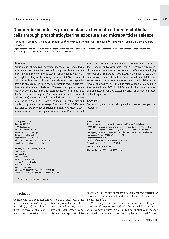摘要
Administration of various chemotherapeutic agents is associated with an increased risk of thrombotic events. Although vascular endothelium plays a predominant role in blood coagulation and fibrinolysis, the effect of cytotoxic drugs on the procoagulant activity (PCA) of endothelial cells has not been well evaluated. Our study aims to investigate the possibility that daunorubicin, a chemotherapeutic agent, exerts prothrombotic effect on endothelial cells. We tested the impact of daunorubicin on phosphatidylserine (PS) exposure, endothelial microparticles (EMPs) release and consequent PCA. Human umbilical vein endothelial cells (HUVECs) were treated with daunorubicin (0.1, 0.2, 0.5, 1, 2 mu M) for 24 hours. PCA of HUVECs was measured using clotting time and purified coagulation complex assays. Counts and PCA of EMPs were evaluated by flow cytometry and clotting time assay, respectively. Lactadherin was used as a novel probe for detection of PS exposure and EMPs release. We found that daunorubicin dose-dependently increased the PS exposure and consequent PCA of HUVECs. Moreover, daunorubicin treatment also enhanced the release of EMPs which were highly procoagulant. This increment was especially significant at 0.2 mu M of daunorubicin or more. Blockade of PS with lactadherin inhibited over 90% of HUVECs and EMPs PCA. However, anti-TF antibody had no significant inhibition effect. Our results demonstrate that daunorubicin treatment enhanced PCA of HUVECs through PS exposure and shedding of procoagulant EMPs. Lactadherin acts as an efficient anticoagulant in this process.
- 出版日期2010-12-10
- 单位哈尔滨医科大学
